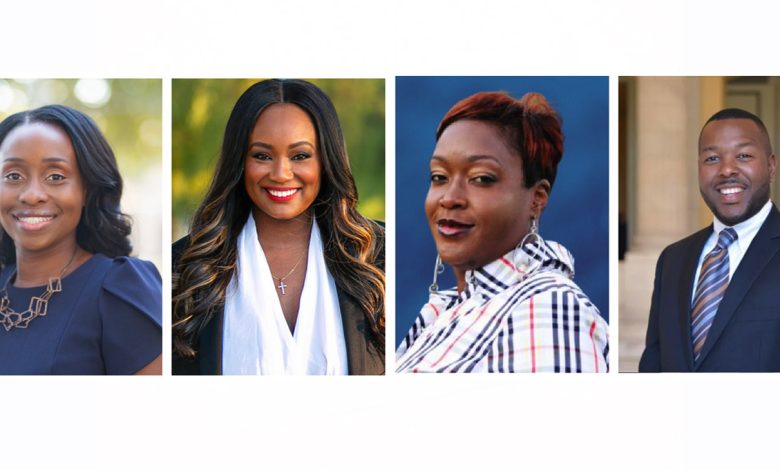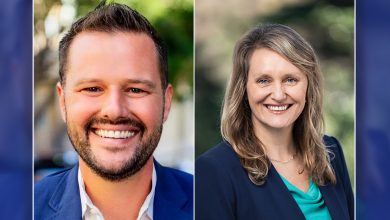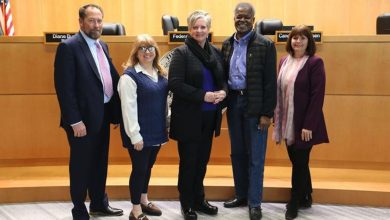California Black Media Political Playback: Black Candidates Are Queuing Up for Intense Political Battles Ahead


Joe W. Bowers Jr. | California Black Media
Last week, at the invitation of the Black in School Coalition (BISC), over 2,500 K-12 students, parents, education advocates, and civil rights leaders marched to the California State Capitol to demand increased funding for Black students in the state’s public schools.
BISC is a statewide advocacy association consisting of 17 organizations from all parts of the education community, including teachers, administrators, local school districts and county board of education trustees, parents, civil rights, and faith groups.
The BISC marchers were calling on Gov. Gavin Newsom and the California Legislature to not move forward with the “Equity Multiplier” proposed in the governor’s Education Budget, which is supposed to be a substitute for Assembly Bill (AB) 2774 authored by Assemblymember Akilah Weber (D – La Mesa).
AB 2774 would have guaranteed funding for California’s lowest performing group, Black students, but advocates say, Newsom’s proposal falls short of that goal.
Because Newsom raised concerns that targeting funds to a specific group of students would violate Prop 209, which prevents preferential treatment based on race, Weber withdrew AB 2774. In exchange, Newsom agreed to increase funding for Black students under the Local Control Funding Formula (LCFF) in the 2023 budget.
The LCFF is a state law that provides funding to local school districts based on the needs of their students. California’s highest-needs student populations receiving supplemental funding for additional support are English Language Learners, low-income students, and children in foster care or homeless youth. However, despite chronic underperformance, Black students are not identified as a high-needs population for funding.
According to state data, in the 2021-22 academic year, 30% of California’s Black students met English standards and 15% met math standards, compared to 61% and 48% of White students meeting reading and math standards, respectively.
The equity multiplier proposal provides $300 million in ongoing Proposition 98 funding to the LCFF to accelerate gains in closing opportunity and outcome gaps. The funds are allocated to school districts with schools serving high concentrations of students eligible for free meals.
The equity multiplier is part of Newsom’s plan to overhaul how the state can hold districts and schools accountable for student performance, with particular attention to racial disparities. According to Newsom’s office, 95% of Black students in California will be impacted because they are enrolled in districts potentially facing new accountability requirements due to low performance.
Dr. Margaret Fortune, president and CEO of the charter school organization Fortune School of Education and the lead voice for BISC says Newsom’s proposal sounds good but does not reflect the intentions of Weber’s bill.
According to an analysis conducted by EdSource, the funding from Newsom’s proposal would benefit about 6% of Black students statewide and they would be receiving an estimated $18 million out of $300 million proposed. Overall, the proposal targets just 5% of students in the state in about 800 schools and the students reached in those schools are mostly Latino.
To address this disparity in funding for Black students not in low-income schools, BISC has developed an alternative plan to the Equity Multiplier. It proposes additional funding for any group not already funded that scores below the state average on any two metrics on the California School Dashboard. Based on this year’s dashboard results, Black and Native American students would qualify.
Because students who have received LCFF funding have shown progress and improved outcomes due to concentrated resources aimed at their improvement, BISC’s funding alternative intentionally provides Black students the additional support that has benefited high-needs student groups.
Prior to their march on the Capitol, members of the BISC and students provided public comments at the State Assembly’s education budget committee hearing in support of their alternative budget proposal.
Fortune suggested to the committee that the $300 million in the governor’s equity multiplier proposal be directed to student groups who perform below the state average on two or more state indicators on the California school dashboard. This would increase per-student funding from $713 under the governor’s proposal to $3,318 for students in California with the greatest academic needs.
Under the BISC alternative plan, an additional 81,617 Black students and 8,807 Native American students would be eligible for this funding, compared to an additional 22,699 Black students and 1,806 Native American students under Newsom’s proposal.
Christina Laster, Western Regional Education Director of the National Action Network, stated that not many Black students attend the low-income schools targeted by the governor’s equity multiplier. Instead, she recommends focusing on student groups who perform below the state average on two or more state indicators on the California school dashboard. This would target student groups in the most academic need based on their performance, not their race.
Dr. Ramona Bishop, CEO of ELITE Public Schools, urged the Legislators to consider the BISC alternative proposal for the equity multiplier, which would address the needs of the students who stood behind her as she spoke. She emphasized that all Black students in the state deserve care, attention, and the best efforts of those in power.
Izzy Gardon, a spokesperson for the governor said, “We share the ultimate goal of the Black in School Coalition to eliminate opportunity and achievement gaps for Black students. However, we continue to believe that our more comprehensive and legally sound proposal is a better option than AB 2774 and its related alternative proposal. We are not alone in that belief — as I believe you have seen, we have the support of members of the CLBC (California Black Legislative Caucus including Weber), CAAASA (California Association of African American Superintendents), the Superintendent of Public Instruction (Tony Thurmond) and many others.”
So BISC and Newsom are at an impasse at what is the best way to direct state funding for educating Black students in the public schools.
BISC wants funding targeting Black students based on their need for support due to poor academic performance, while Newsom’s Equity Multiplier focuses on schools with high concentrations of poverty, impacting about 6% of the state’s Black students.
Newsom is concerned about the legal implications of funding aimed at specific racial groups and aims to reform the LCFF to address underperforming racial groups. BISC, on the other hand, is focused solely on Black student funding and not on reforming LCFF.
But the California Department of Justice (DOJ) in a preliminary report it wrote for the Task Force to Study and Develop Reparation Proposals for African Americans recommended funding Black students through the state’s funding formula, suggesting that Newsom should not be so concerned about violating Prop 209.
A recent report from the Legislative Analyst’s Office complicates the debate by noting that high-poverty schools already receive targeted funding and recommending that the Legislature not approve funding for the Equity Multiplier.
Until a solution to the impasse is achieved, the state must persist in its efforts to identify and implement the appropriate policy to assist its Black students in improving their academic performance, based on their individual needs rather than their race.



